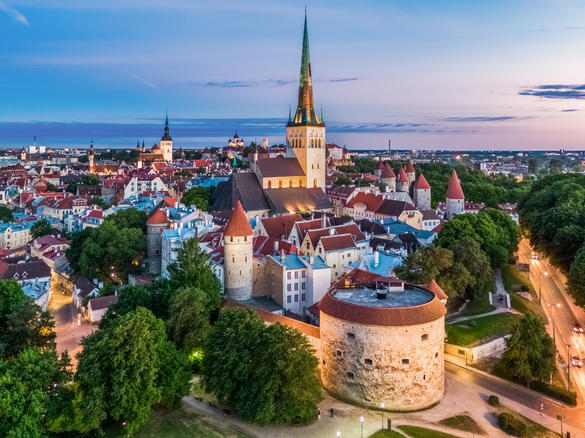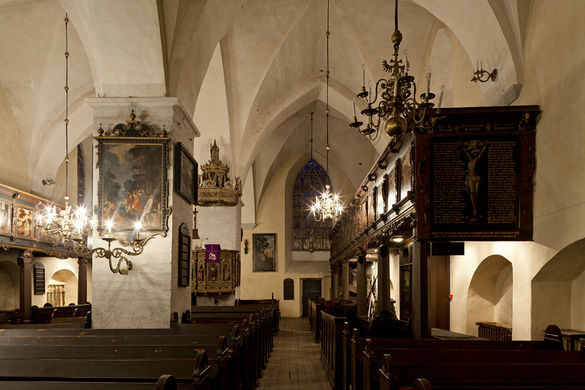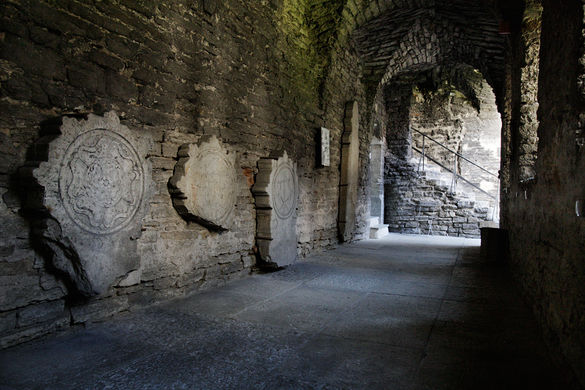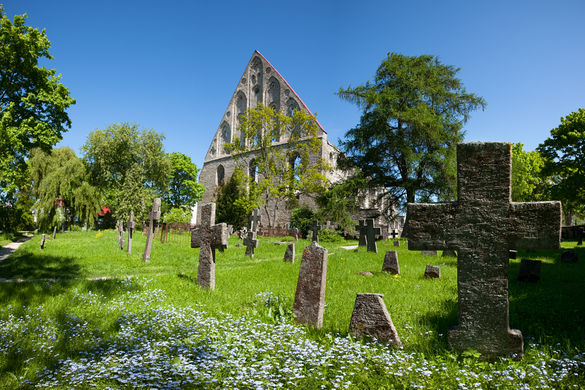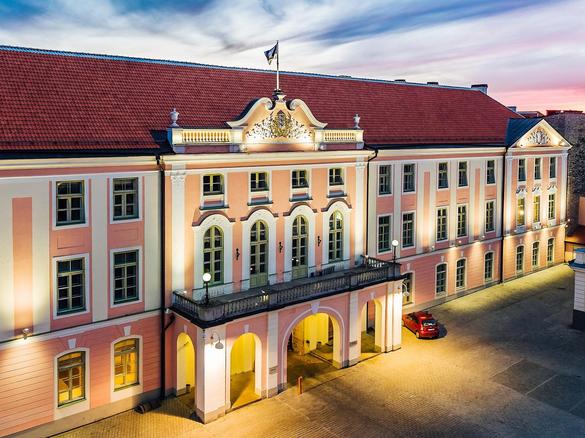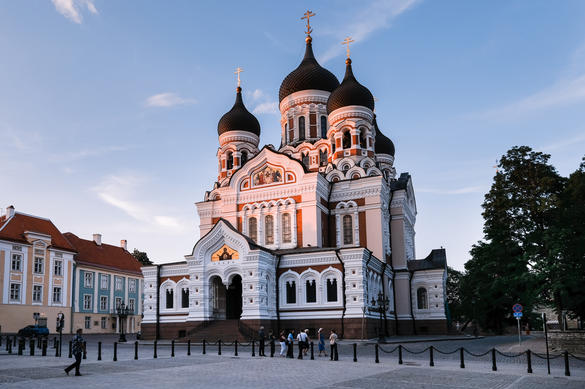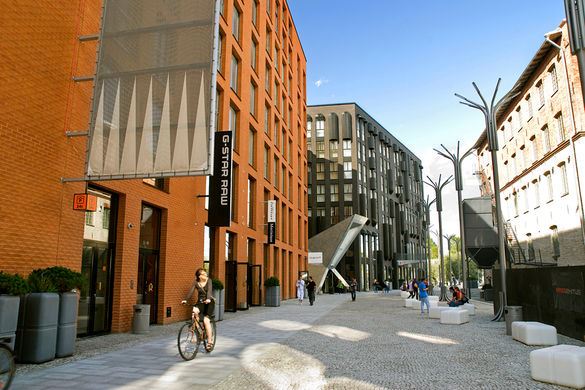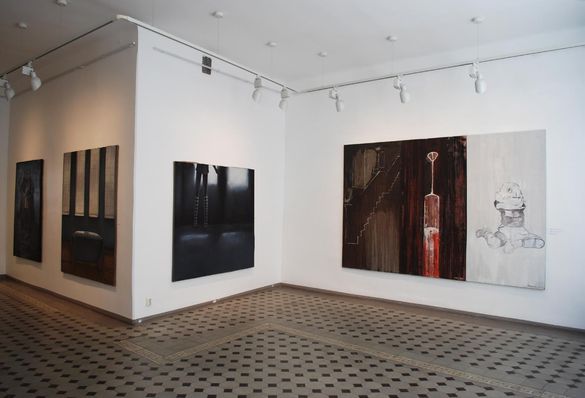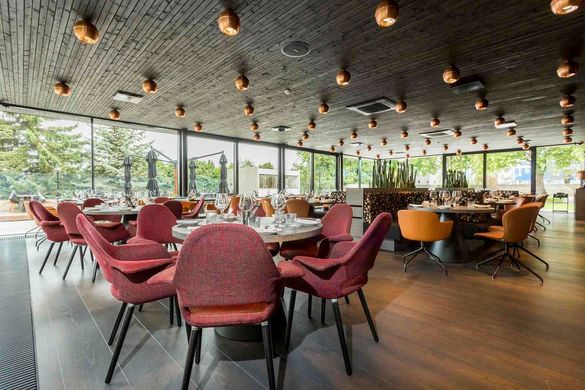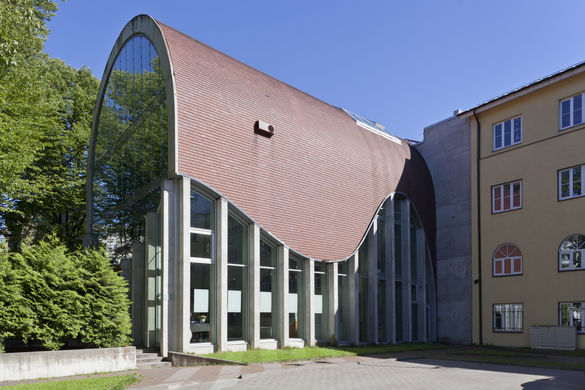
The many faces of architecture in Tallinn
07.07.2020
Eduard
Kohlhof
Tallinn is a compact seaside town of contrasts and its medieval old town, defence structures and wooden suburbs are its most valuable architectural pearls. Some people say that Tallinn is similar to Helsinki, while it reminds others of Prague. In the 19th century, our capital was called the Naples of Scandinavia, but Tallinn is, indeed, still Tallinn.
Old churches, buildings and fortifications have been magnificently preserved in the Old Town. Just step outside the Old Town and cross the street where you will find yourself in the ultramodern Rotermann Quarter with the old suburb of Kalamaja located opposite. The area mostly consists of wooden buildings that once accommodated fishermen. At present, it is one of the most well-known residential areas for hipsters in Europe.
In Kadriorg, a baroque palace and modern art museum Kumu stand alongside each other. These two are adjoined by the picturesque quarter that even today exhibits a 19th century provincial atmosphere. In the centre of town, the pre-war strict and integrated architecture representative of the Republic of Estonia is mixed with Soviet buildings. Below you can read about the various architectural styles represented in Tallinn. Each description of a style will also include examples that can be admired throughout the town.
Gothic architecture
There was a fortified stronghold on the slope of Toompea in the 11th century and there were also a settlement and fenced-in market place in the vicinity of the present Town Hall Square. There were two market yards nearby – the Scandinavian and the Russian market.
When the crusaders arrived in 1219, a castle and dome church were erected in Toompea. The building of the first battlements around Toompea was started in 1229. In the lower town, the first battlement was erected in 1265 at the behest of Queen Margaret. The battlement that remains today dates back to the 14th century. A town consisting of two separate parts was formed at that time – the capital of the Estonian Duchy – Toompea (Domberg or upper town) – and the lower town of the Hanseatic Town Reval.
The most important period in the architectural development of Tallinn was 13-16th century. Tallinn's gothic architecture was influenced by the architecture of the island of Gotland, Lower Rhine and Westfalen and subsequently by the architecture of the Hanseatic Towns and the German Order. Local construction material – limestone – added character to the architecture.
By the 14th century, the castle in Tallinn had become one of the most powerful fortresses of the Livonian Order. The layout of the castle, its architectural austerity and its simplicity served as a model for other fortifications in the area. Only the western and northern outer walls, along with its three towers – amongst them one of Estonia’s symbols, Tall Herman – were spared later reconstruction.
In the 15th century (Late Gothic era), a town hall, guild building, convent buildings and residential houses were built in the town. These are characterised by the high dormers on the high-stretched facades. Of the different layouts, the prevalent type of house was that with two rooms, a diele and a dornse. A diele is a spacious room that extends to the height of two storeys with a fireplace at the back wall; this type of building was primarily used as an office or workshop. And behind it was the dornse – a living room with hot-air heating. The upstairs, cellars and attics were used as storage rooms.
Such buildings were first erected on Pikk street (The Three Sisters, Pikk street 71), Lai street (The Three Brothers, Lai street 38, 40, 42) and at the Old market (Father and Son, Kuninga street 1).
Tallinn Old Town has been entered in the UNESCO World Heritage List as a well-preserved medieval town. It is a unique town within the Baltic Sea region and in the context of Europe.
Examples of Gothic architecture in Tallinn:
- Town Hall (15th century), Raekoja street 1 (Town Hall Square).
- Dome Church (15th century), Toom-Kooli street 6.
- St. Nicholas' Church or Niguliste Museum (1420), Niguliste street 3.
- St. Olaf's Church or Oleviste Church (15th century), Pikk street 65 / Lai street 50.
- Church of the Holy Spirit (15th century), Pühavaimu street 2.
- Great Guild Hall or the Estonian History Museum (1417), Pikk street 17.
- St. Olaf's Guild Hall (1422), Pikk street 24.
- St. Catherine's Dominican Monastery Hall (14-15th century), Vene street 12/14.
- New alms-house (16th century), Rüütli street 7/9.
- Horse mill (14-18th century), Lai street 47
- The ravelins of St. Bridget's Convent (1417), Merivälja tee 18.
Renaissance
There are a few buildings left that date to the Renaissance era. One example is the House of the Brotherhood of Black Heads (1597) located at Pikk street 26. In Tallinn, Renaissance-style architecture manifested itself most frequently in the ornaments of houses, especially in carved details and decorative paintings.
Baroque
In the beginning of the 17th century, a new style reached Tallinn. This was baroque, or to be more precise, protestant Scandinavian Baroque. It is an extremely restrained style that manifests itself in functionality and simplicity.
In the 18th century, we can mostly see Baroque architecture in reconstructions – from the reign of Peter the Great to the middle of the 18th century, the construction of stone buildings was prohibited throuhgout the whole of the Russian empire, excluding St. Petersburg.
The pearl of Baroque architecture in Tallinn is the von Rosen Palace (1670s, Pikk street 28). The most magnificent Baroque building is Kadriorg Palace, which was designed in Italian Baroque style by architect Niccolò Michetti (1718, A. Weizenbergi street 37). Another example of baroque architecture is Castle of Toompea, the seat of the Estonian Parliament and a former residence of the Governor of Estonia, built in Rococo style with some elements of classicism (1773, architect Johann Schulz, Lossi plats 1). Stenbock House (1686, Lai street 17), which at one point was owned by A.D. Menshikov, represents Dutch Baroque.
The facade of the northern porch of St. Nicholas' (Niguliste) Church was decorated with sculptures in the 17th century, but quite the tower spire was rebuilt in baroque style at the end of the century (Niguliste street 3).
Classicism
In the era of classicism (from the end of the 18th century to the beginning of the 19th century) many buildings were erected in the upper town, whereas buildings were being rebuilt in the lower town. In the course of rebuilding, many of the medieval facades were given a modern classicist exterior. The Gothic style often prevailed inside the yards.
The best examples of classicist architecture in Tallinn are: the seat of the government (1790s, Rahukohtu street 3), von Rosen House (1830, Lai street 5), Benckendorff House (1814, Kohtu street 8), the first dome building – the Orthodox Church of St. Nicholas (1827, Vene street 24).
Historicism
In the middle of 19th century historicism and eclecticism came into vogue. The first manifestations of this style in Tallinn were St. Canute’s Guild Hall (1864, 20 Pikk street, now a contemporary dance theatre SAAL), which was initially built in the Tudor-Gothic style, and the Estonian Knighthood House (1848, Kiriku plats 1). Alexander Nevsky Cathedral (1900, Lossi plats 10) is an example of the Pseudo-Russian style. The Reichmann house (1909, Pikk street 21/23) is the most interesting example of Neo-Mannerism.
The historic centre of Tallinn changes rapidly from the second half of the century onwards. The area between Viru väljak and Tõnismägi is actively developed and the old town and the new parts begin to gradually merge.
Due to the unique construction material, the industrial architecture of the new era greatly resembles that of the Old Town – with the Rotermann warehouses and factories (8 Rotermanni street) and Rosen’s Distillery (6 Mere avenue) as examples.
Art Nouveau
In the 20th century, Tallinn welcomes an architectural style that was widespread in Europe – Art Nouveau, in particular Scandinavian Art Nouveau, which emerged due to the influence of Finnish architecture.
This is the era when well-known Finnish architects Armas Lindgren, Herman Gezelius and Eliel Saarinen were working in Tallinn. The latter drafted the town's first general plan in 1913 that prescribed the shift of trading outside the boundaries of the Old Town.
Examples of Scandinavian Art Nouveau in Tallinn:
- Estonian National Opera (1913), Estonia puiestee 4.
- Estonian Drama Theatre (1910), Pärnu maantee 5.
- Saarinen House (1912), Pärnu maantee 10.
- The Luther Factory workers' house (1905), Vana-Lõuna street 37.
The other sub-style of Art Nouveau that spread in Tallinn was the eclectic-decorative style, known as Riga Art Nouveau. It is more flamboyant and stands out with a great number of masks and ornaments. An excellent example of this sub-style is J. Rosenbaum's Draakoni Gallery (1910, Pikk street 18).
The pre-war architecture of the Republic of Estonia
This is the time when the town shifts outside its historical heart. A new Tallinn is formed – the capital of the Republic of Estonia.
The architecture of 1930s Tallinn is a mixture of traditionalism, functionalism, Art Déco and Scandinavian classicism. It is clearly recognisable and respectable, primarily due to its rectangular shapes and the popular brown or greyish colour anthracite grout popular at the time. At the end of the 1930s, it became popular to cover the facades with dolomite panels or broken limestone.
It is indeed the functionalism of the 20th century that gave the present heart of Tallinn its truly national exterior.
The pre-war architecture of the Republic of Estonia can be seen at Tõnismägi and by Pärnu maantee, as well as Raua street and in the area around the Police Garden (Politseipark).
Examples of functionalism include:
- Tallinn Art Hall (1934), Vabaduse väljak 6.
- Tallinn City Government building (1935), Vabaduse väljak 7.
- Tallinn “Chile House” (Chilehaus) (1936), Roosikrantsi street 23 / Pärnu maantee 36.
- The House of Parliament / Riigikogu (1922), Lossi plats 1a.
- Fire station (1939), Raua street 2.
- Chapel at Metsakalmistu (Forest Cemetery) (1937), Kloostrimetsa tee 36.
- Chapel at Liiva cemetery (1935), Kalmistu tee 34a.
Soviet architecture
This period added two new original styles to architecture in Tallinn – the Socialist Classicism of the 1940s-1950s and the Soviet Modernism of the 1950s-1980s. The peculiarity of Soviet architecture in Tallinn lies in the fact that it is middle-class in comparison to other socialist republics – this is also why Tallinn was such a popular place for film-makers who came here to film the so-called western life.
Soviet architecture in Tallinn 1945-1961
The architects who stayed on in Estonia after the war designed buildings in the pre-war style. There are signs of German influences there – high stone roofs, the grey or brown grout characteristic of the 1930s.
- The building of the Estonian Academy of Sciences (1958), Estonia puiestee 7.
- Sõprus Cinema (1955), Vana-Posti street 8.
In the beginning of the 1950s, international Socialist Classicism gathered ground.
At the time, architects from Leningrad (modern-day St. Petersburg) were sent off to work or go on a traineeship to Tallinn. They added the Soviet style to the exterior of the town; the new style made the town ideologically more restrained and helped to express the Stalinist ideas better; however, these were still type projects.
- Tower building (1954), Tartu maantee 24.
- Naval Officers' House (1954), Mere puiestee 5.
The examples of Soviet architecture that are of particular interest are the developments in Mustamäe, Pirita and Nõmme from the 1950s to the 1960s, which show no similarities in any way to the building style employed in other republics of the Soviet Union.
Architecture in 1960-1980
Architects began to try out different styles in Tallinn at the beginning of the Khrushchev Thaw in the 1960s. The erected buildings became symbols of both the town and the whole republic. Despite the iron curtain, new modern trends from Northern Europe, especially Finland, became apparent in Estonian architecture. What makes modernism special is its international character.
- Building of the Ministry of Foreign Affairs (1968), Islandi väljak 1.
- The Library of the Tallinn University (1964), Rävala puiestee 10.
- Flower Pavillion and restaurant Tuljak (1964/1970), Pirita tee 26 and 26e.
- The stage of the Song Festival Grounds (1960), Narva maantee 95.
- Viru Hotel (1972), Viru väljak 4.
- The Writers' House (1963), Harju street 1.
- Maarjamäe Memorial Complex (1960/1975), Pirita tee 74.
In 1980s, the style of brutalism is used in construction in Tallinn – the majority of buildings were completed for the Olympic Regatta held in Tallinn during the 1980 Olympic Games. At this the time, Pirita road is built together with the seaside promenade that joins the centre of town with Pirita and the Olympic Yachting Centre.
- Tallinn Olympic Yachting Centre (1980), Regati puiestee 1.
- Hotel Olümpia (1980), Liivalaia street 33.
- Linnahall / City Hall (1980), Mere puiestee 20.
- The building of the National Library of Estonia (1992), Tõnismägi 2.
Contemporary Estonian architecture
After the era of panel houses characteristic of the 1970s and Soviet modernism of 1990s, Estonian architecture – which was considered progressive at the time – made a giant leap forward by the end of the 1990s.
The most recent projects have changed the town's exterior remarkably. Those interested in modern architecture will have plenty to see in Tallinn. The buildings here now exhibit trends that are typical of Northern Europe. The characteristic features are: functionality, the use of modern (including natural) materials (especially timber/wood) and energy-efficient technologies.
A good example is the art museum Кumu (2006, Valge street 1). In striving to fit into the stony landscape, it literary rises up from inside the ground and delicately shifts the boundaries of this historic quarter.
Several religious buildings can be seen in the background of modern houses – the new St. Bridget's Convent (2001, 18 Merivälja road) melts perfectly in its surroundings and follows the de facto the traditions of the old convent, built in the 15th century and now in ruins. Tallinn Synagogue (2007, Karu street 16) is an interesting solution where the relatively modest building on the outside is decorated by an amazing interior.
Alongside new projects, people are now actively involved in the renovation of old buildings. In many such buildings, as much of the old is preserved as possible.
The former Rotermann industrial quarter (Rotermanni street 8) now houses a new, conceptual building complex – the old factories are complemented by modern houses; as a result, the quarter is slowly claiming a central role in the town's architectural ensemble.
Energy Discovery Centre and the Tallinn Creative Hub were opened in the building of a former power plant (Põhja puiestee 27a).
The Seaplane Harbour, housed in the former hydroplane hangars (1917), constitutes an excellent and rare example of the use of concrete domes both in Estonia and elsewhere in the world (Vesilennuki street 6).



